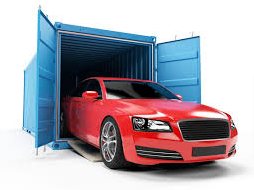Importing a vehicle into Canada involves several important steps and regulations, ensuring that your car meets the country’s safety and environmental standards. If you’re looking to bring your car from another country, especially the U.S., this guide will help you navigate the entire process, from understanding customs requirements to finding Registered Importers.
Why Import a Car to Canada?
There are many reasons why someone might want to import a car into Canada. These include:
- Better pricing or availability: Certain models may be cheaper or available sooner in other countries.
- Relocation: If you’re moving to Canada, you may prefer bringing your vehicle with you instead of purchasing a new one.
- Classic or specialty cars: Enthusiasts might want to import vintage or unique vehicles that are not available locally.
Whatever the reason, understanding how the process works will save you time and money.
Step 1: Verify Vehicle Eligibility
Before importing a car, ensure it is eligible under Canada’s import regulations. The vehicle must meet the Canadian Motor Vehicle Safety Standards (CMVSS). The Registrar of Imported Vehicles (RIV) program governs most of the vehicles imported from the United States.
You can check if your vehicle qualifies by visiting the RIV website and using the Vehicle Import Compatibility tool. Cars from countries other than the U.S. may require further approval, so confirm before starting the import process.
Step 2: Hire a Registered Importer
Registered Importers (RIs) play a crucial role in the vehicle importation process. An RI is a business or individual authorized to import vehicles that comply with Canadian standards. While it’s possible to handle the import yourself, a Registered Importer can simplify the process, ensuring your vehicle meets all necessary regulations.
Why hire a Registered Importer?
- Compliance expertise: They know the ins and outs of import laws.
- Vehicle modifications: Some vehicles may need modifications to meet Canadian standards, and RIs can perform these upgrades.
- Documentation: Importers manage customs and registration paperwork, which can be overwhelming.
Step 3: Obtain the Necessary Documents
To import your car into Canada, you will need specific documentation:
- Original Bill of Sale: This proves the car’s ownership and value.
- Title or Registration: Ensure the car’s title is clear of liens or encumbrances.
- Proof of Insurance: Confirm that your vehicle is insured in Canada.
- Export Certificate (for U.S. imports): The U.S. Customs and Border Protection (CBP) requires an export declaration before a vehicle is allowed to leave the U.S.
For more details on what documents are required, you can visit the Canada Border Services Agency (CBSA) website or consult with your importer.
Step 4: File for Importation at the Border
When you arrive at the Canadian border, present the following documents:
- Personal identification such as a passport or visa.
- Vehicle import paperwork, including the title and bill of sale.
- Proof of Canadian residency (if applicable).
At the border, a customs officer will review your documents. You may be required to pay GST (Goods and Services Tax) and any applicable duty fees. The current duty for importing cars from the U.S. is 6.1%, though NAFTA vehicles are exempt.
Step 5: Pay Fees and Taxes
Several fees apply when importing a car into Canada. These include:
- RIV Fee: $325 CAD + GST and PST, or $425 CAD for vehicles entering through the border into Quebec.
- Excise Taxes: For vehicles with air conditioning or for certain luxury vehicles.
- Provincial Taxes: Depending on the province you reside in, you may need to pay PST, HST, or QST.
Be sure to factor these costs into your budget when calculating the overall expense of importing a vehicle.
Step 6: RIV Inspection and Modifications
Once your car enters Canada, it needs to pass the RIV inspection. You have 45 days to complete the inspection. The purpose is to ensure the vehicle complies with Transport Canada standards.
Common modifications for compliance include:
- Daytime Running Lights (DRLs)
- Immobilizers
- Metric speedometer display
Once these modifications are complete, your vehicle can pass the inspection.
Step 7: Register Your Vehicle in Canada
After passing the inspection, the next step is to register your vehicle in your province. Visit your provincial or territorial motor vehicle office with the necessary documentation:
- Proof of RIV compliance (RIV inspection form).
- Ownership documents (title, bill of sale).
- Proof of insurance from a Canadian insurer.
Each province has its own specific registration requirements, so it’s important to check with your local motor vehicle authority for details.
Importing Cars to Canada: Key Considerations
- Age of the Vehicle: Canada has strict rules for vehicles that are 15 years old or newer. Cars older than 15 years can be imported without meeting all CMVSS standards, but they still need to pass safety inspections.
- Environmental Standards: Imported vehicles must meet Canadian emissions standards, which might require additional testing or modifications, especially for older vehicles.
- Modifications: Be prepared for potential modifications to bring your vehicle into compliance with Canadian safety standards.
- Temporary Imports: If you’re visiting Canada temporarily (e.g., as a tourist or a student), you can import your car for the duration of your stay without permanently registering it, provided that the car leaves Canada when you do.
Role of Registered Importers in the Process
Registered Importers (RIs) are essential for vehicles that don’t fully comply with Canadian standards. They:
- Handle the conversion of non-compliant vehicles to meet Canadian regulations.
- Assist in paperwork and custom filings.
- Ensure that vehicles pass the necessary inspections.
Hiring an RI is particularly important for specialty or high-value vehicles where compliance might be more complex.
Conclusion
Importing a car into Canada involves navigating various regulations, fees, and inspections. By verifying your vehicle’s eligibility, securing the right documents, hiring a Registered Importer, and following the outlined steps, you can ensure a smooth transition for your vehicle. With proper preparation, you’ll soon be driving your imported car on Canadian roads.


